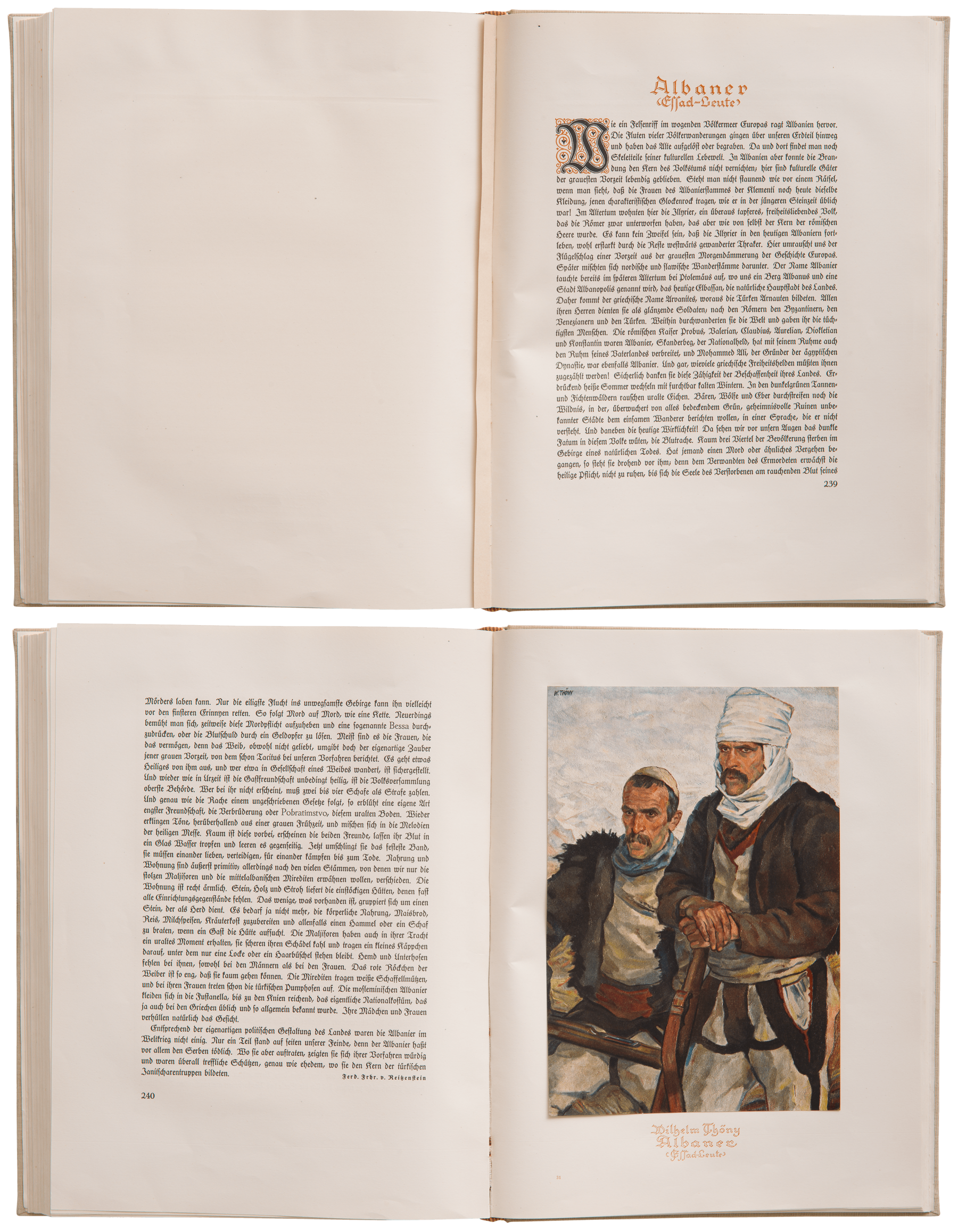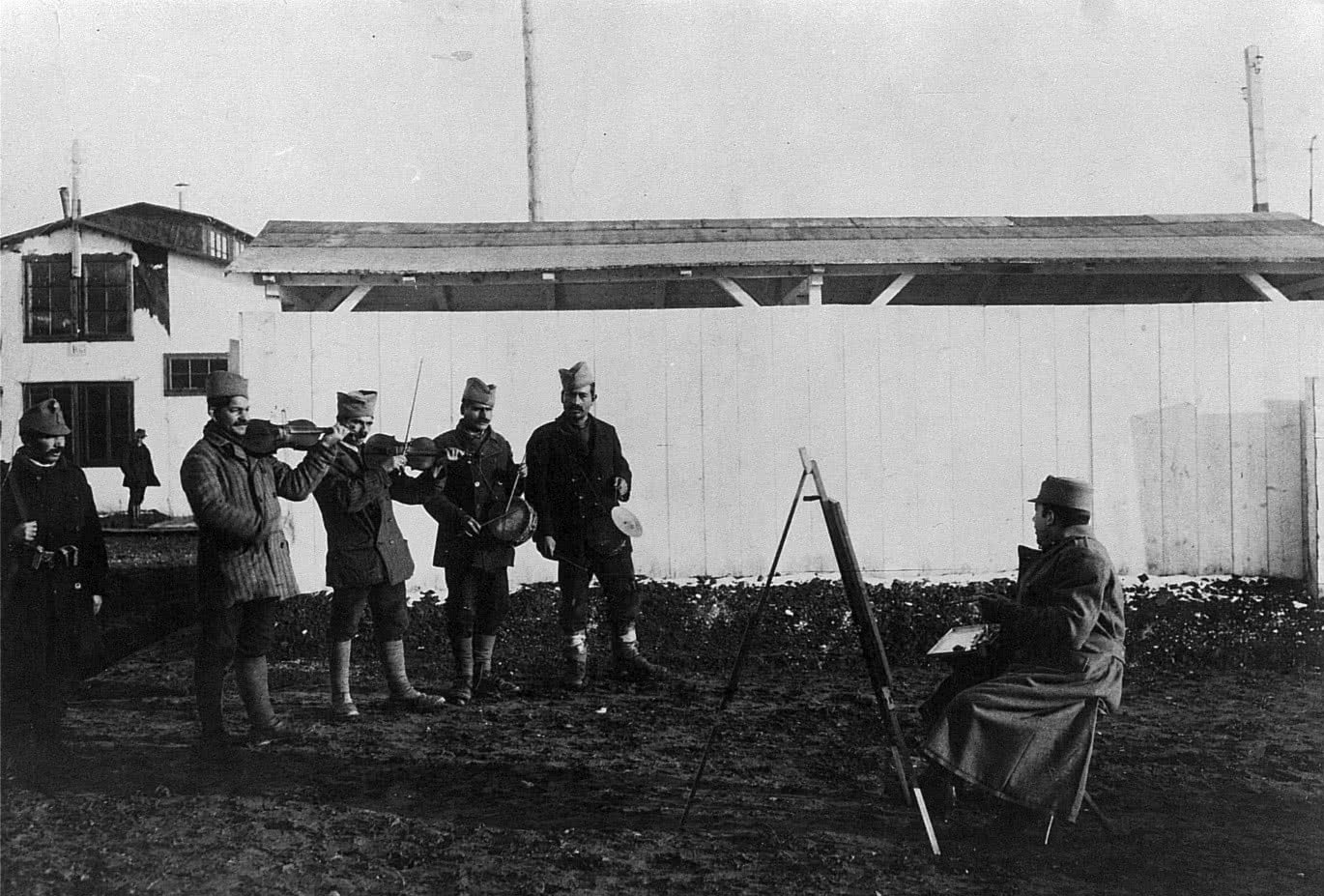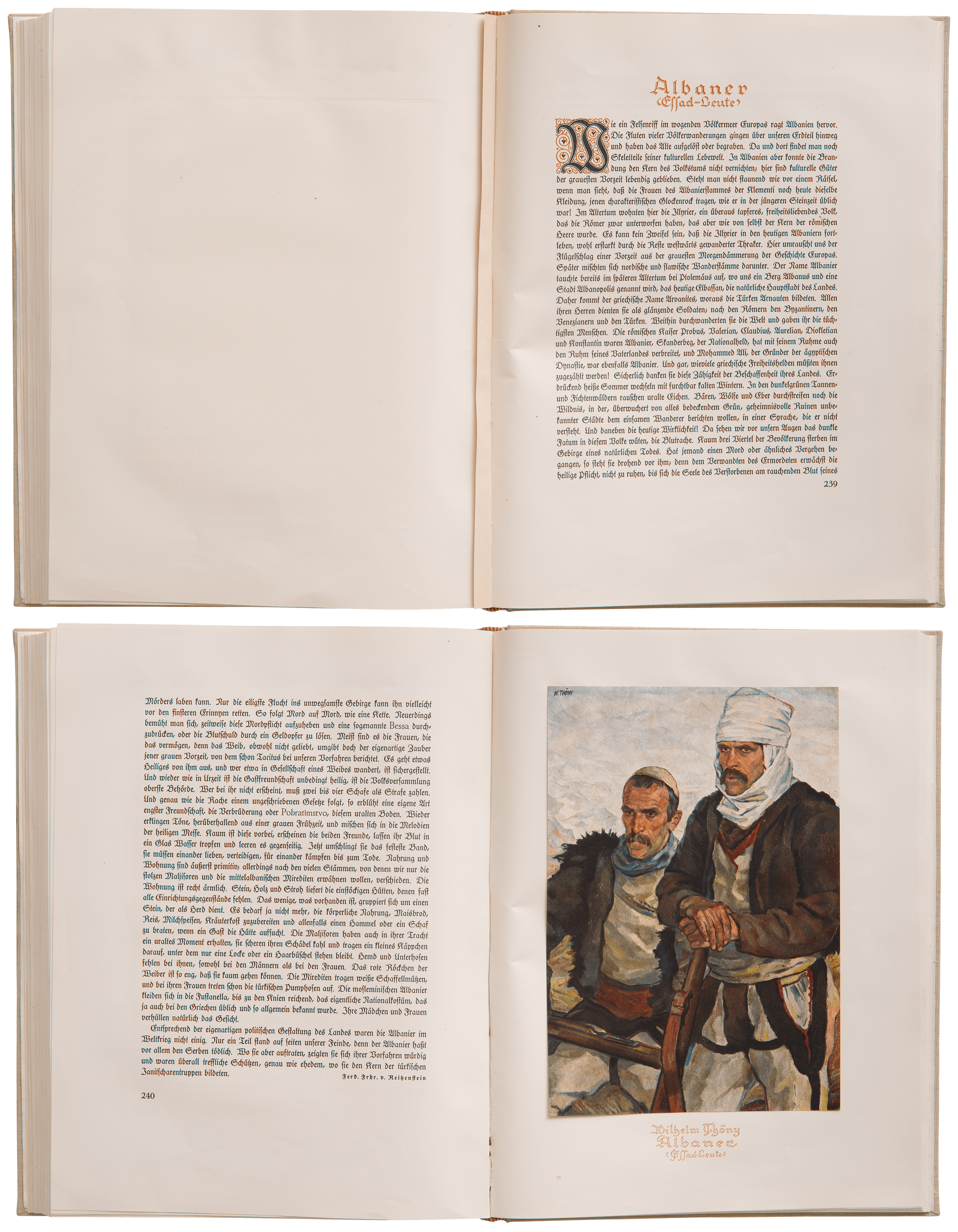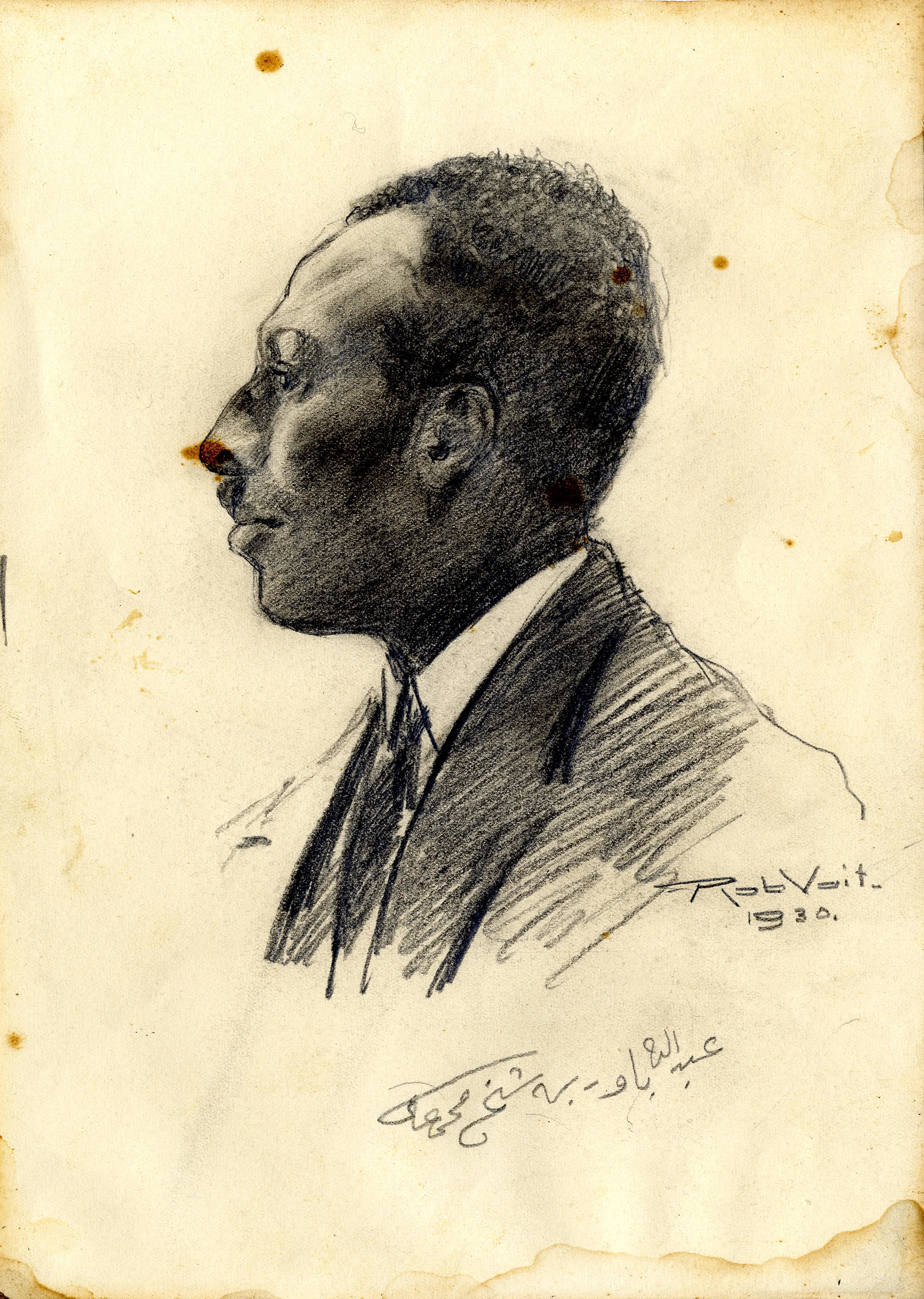
Die Feinde Deutschlands und seiner Verbündeten (The Enemies of Germany and its Allies) Leo Frobenius and Hugo v. Freytag-Loringhoven (ed.), 1917
The Production of Images of the Enemy
The portfolio work “Die Feinde Deutschlands und seiner Verbündeten“ (The Enemies of Germany and its Allies), which had been commissioned by Emperor Wilhelm II, was published in 1917. The Central Powers—Austria-Hungary, the German Empire, the Ottoman Empire, and Bulgaria—therein collected graphic works and text descriptions dealing with their war enemies. The soldiers were depicted as types which were supposed to illustrate both enmity and their ethnicity. That the portrayed men were prisoners of war, was kept secret. Wilhelm Thöny from Graz was also among the commissioned artists.
Verlagsanstalt Hermann Klemm, Berlin-Grunewald
30 × 40 cm
Graz Museum / Photo: Arno Friebes
Wilhelm Thöny as a Regiment Painter in the First World War
Wilhelm Thöny (1888–1949) played a decisive role in the arrival of modern art to Graz. At the outbreak of the First World War, he was just in the process of gaining ground as a young artist in Munich. In 1915, he volunteered for a one-year period of service for the duration of the war with the Imperial and Royal Landwehr Infantry Regiment No. 3 in Graz, his native city. He did not succeed in being appointed as an official war painter; nevertheless, he could work as a regiment painter on a large scale. Using the formal language of war propaganda, he created postcard motifs glorifying the life of soldiers, portraits of high-ranking officers and several large-format battle scenes. Already at the beginning of his activities as a painter in the First World War in 1915, Thöny received the highly prestigious commission to participate in the portfolio work “Die Feinde Deutschlands und seiner Verbündeten“ (The Enemies of Germany and its Allies).
The Enemies of Germany and its Allies
Wilhelm Thöny created seven original paintings for “Die Feinde Deutschlands und seiner Verbündeten“: “Italienische Bersaglieri“ (Italian Bersaglieri), “Italienische Alpenjäger“ (Italian Alpino), “Albaner“ (Albanian), “Serben Infanterie“ (Serbian Infantry), “Serbische Zigeuner“ (Serbian Gypsies), „Rumänen“ (Romanians) and „Grieche“ (Greek). For these individual and group portraits, he worked in prisoner-of-war camps, where he could select the portrayed persons and have them photographed. This propaganda work served to legitimize war and was intended to underline the strength of the German soldiers as a closed unit. Already purely visually, the enemies in the war were depicted as heterogeneous foreign types. Thöny’s portraits of the “enemy” also exhibit hardened, malicious eyes. As a counterpart to this portfolio work, “Die Wehrmacht Deutschlands und seiner Verbündeten“ (The Armed Forces of Germany and its Allies) was published.
The Man of Steel
The portrait of Colonel Heinrich von Tenner corresponds to the stereotype of “ironclad masculinity”. It was supposed to signal both mental and physical inviolability, and to embody the ideal of the unwavering and invulnerable warrior. As a military leadership personality, he was a model and representative of the regiment. The painting was created in 1917—on the Italian front line on the Mount Zebio, in the battle position of the Imperial and Royal Schützen Regiment No. 3, in which Wilhelm Thöny served as a regiment painter.


